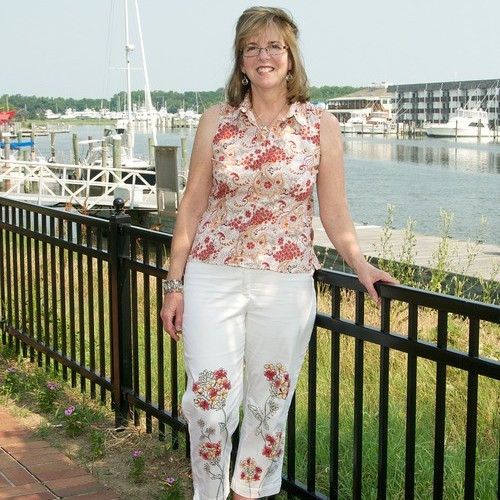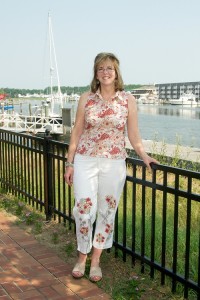No more ankle pain, and no more ‘stupid shoes’


Former runner and aerobics teacher Laurie Beauchamp struggled with the forced inactivity imposed after surgery to reconstruct the posterior tibial tendon in her left ankle. But the end result – pain-free walking and exercising – made that struggle worthwhile.
“It was very intense,” Beauchamp said of her rehabilitation process. “I was basically confined to my bed with assistance from family members … I followed the letter of the directions from the doctor.”
Beauchamp had struggled with pain in her left foot for years – brought on by all of her physical activity and exacerbated by wearing the “wrong shoes,” she said.
By 2007, she was diagnosed with a ruptured posterior tibial tendon, which extends from the calf muscle through the ankle to the bones in the foot. She was finding that extended periods of walking or exercise resulted in excruciating pain.
By 2010 it became too much, and she turned to surgical options.
“Here I was just turning 50, and I thought I want to do this now when I can have a good recovery,” Beauchamp said.
So she sought the advice of an ankle specialist – Paul Kupcha, M.D., an orthopaedic surgeon with Christiana Care Health System.
“It was a huge surgery,” she said. “I just felt like [Dr. Kupcha’s office] was a very knowledgeable team. From the first phone call to getting my documents there … everyone was very attentive.”
Dr. Kupcha rebuilt Beauchamp’s posterior tibial tendon in December 2010 at Christiana Care’s Wilmington Hospital. She kept all weight off her left foot for eight weeks following the surgery.
“It was very, very scary during the whole thing, because I wasn’t used to being immobile,” Beauchamp said. “It was frustrating, but I made it fun.”
When she progressed to being able to bear partial weight on her foot and use a walker, Beauchamp decorated it with a basket to carry things around.
It took until April 2011 before Beauchamp finally graduated from physical therapy. During that five-month span, she kept in regular contact with Kupcha’s office to make sure she knew what had to be done – everything from taking care of her surgical wound to what kind of shoes to wear. Kupcha’s office also worked with the physical therapy team that Beauchamp used to keep her rehab on track.
“Every time I went to Dr. Kupcha’s office, I was just handled with the best of care. No question was a stupid question,” she said.
More than a year after she finished therapy, Beauchamp was back in the gym. She is hiking. She can do aerobics, spin class and weightlifting. She is even wearing regular shoes again – although she has forever given up on “stupid shoes.”
“Right after the surgery, I wore tennis shoes for a very long time,” Beauchamp said. “I really got educated on proper footwear. I can really wear whatever I want to [now]. … the surgery was done so beautifully that I don’t want to do anything that hurts it.”
Beauchamp makes smart footwear choices and spent months following specific instructions for taking care of her new ankle. The results, she said, have been outstanding.
“I can walk for extended periods of time. I can wear the shoes that I want to wear,” Beauchamp said. “I’m so grateful that I did it.
“I cannot say enough about Dr. Kupcha and his team. … It’s just a very comprehensive, caring program, always making sure that I had what I needed even though I was two counties away.”